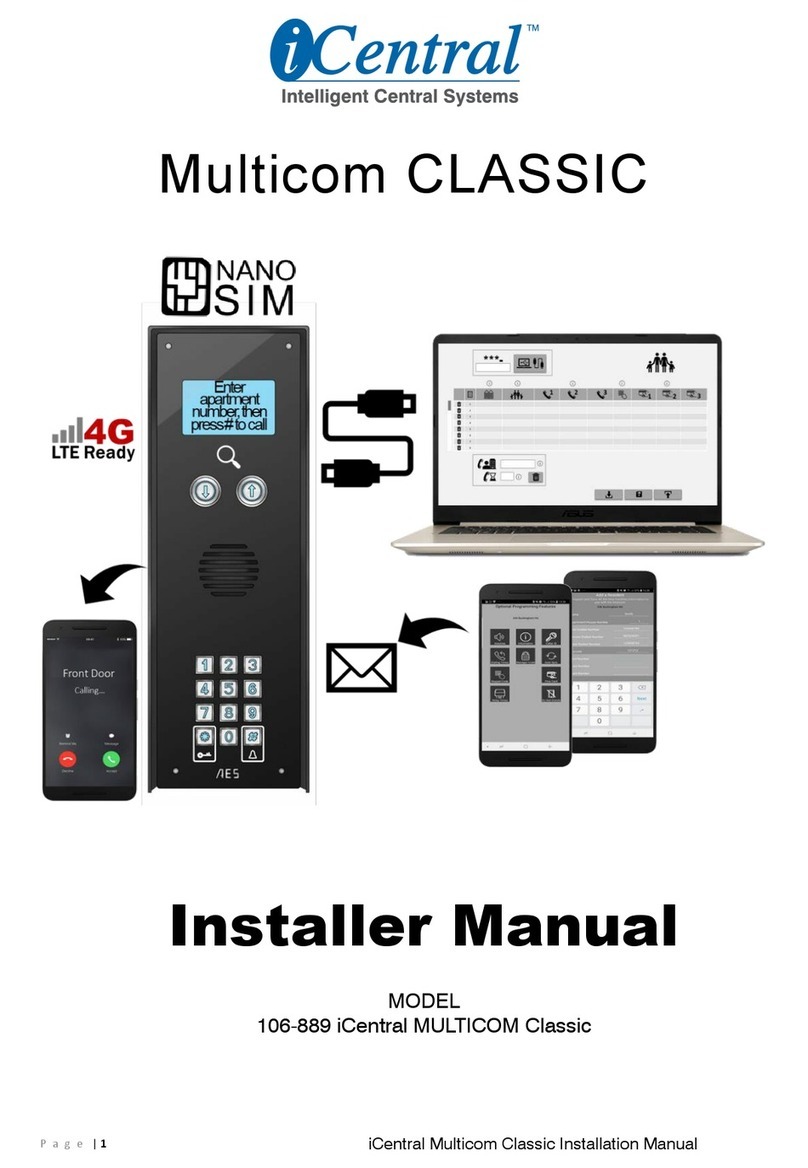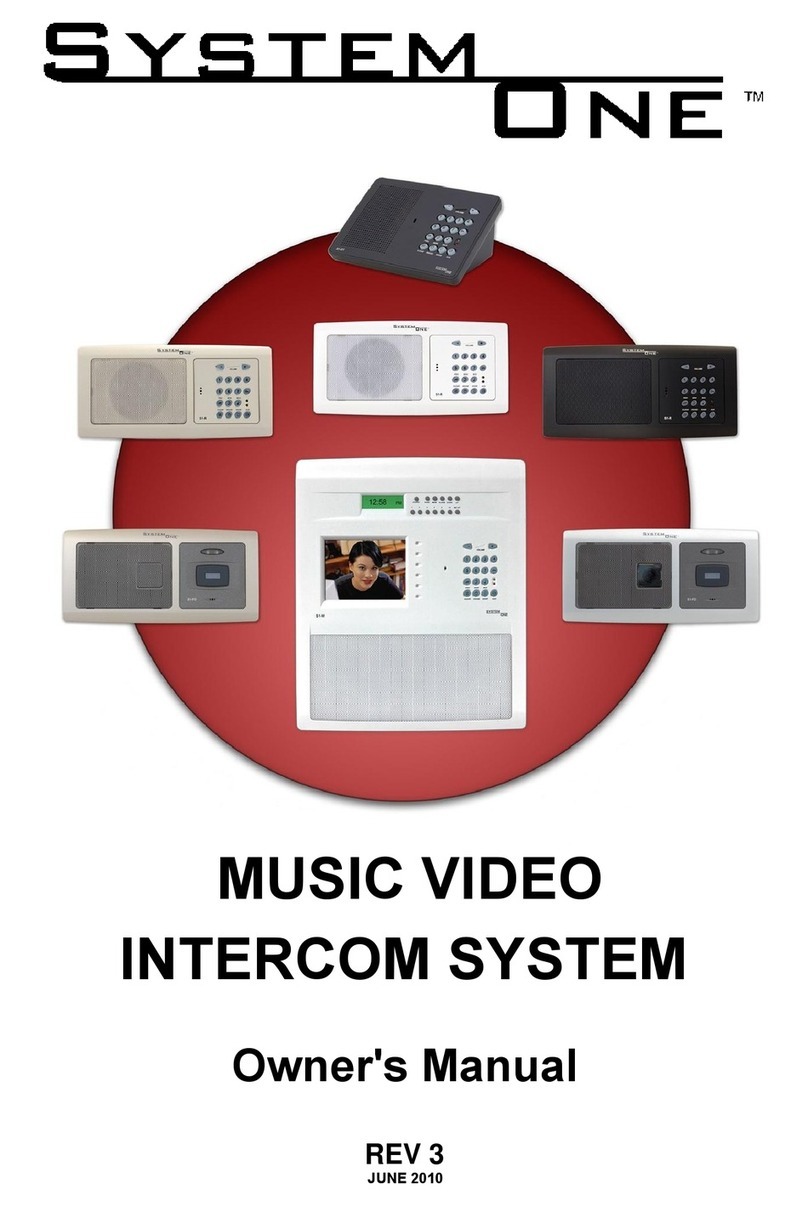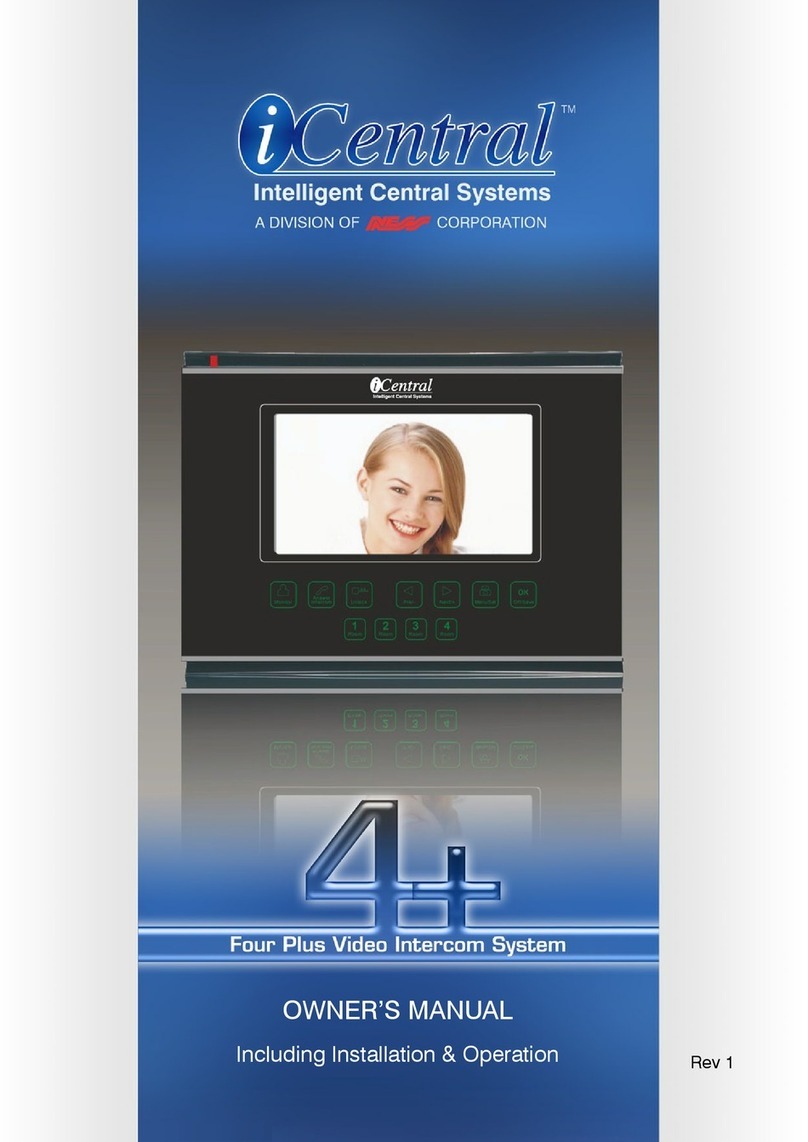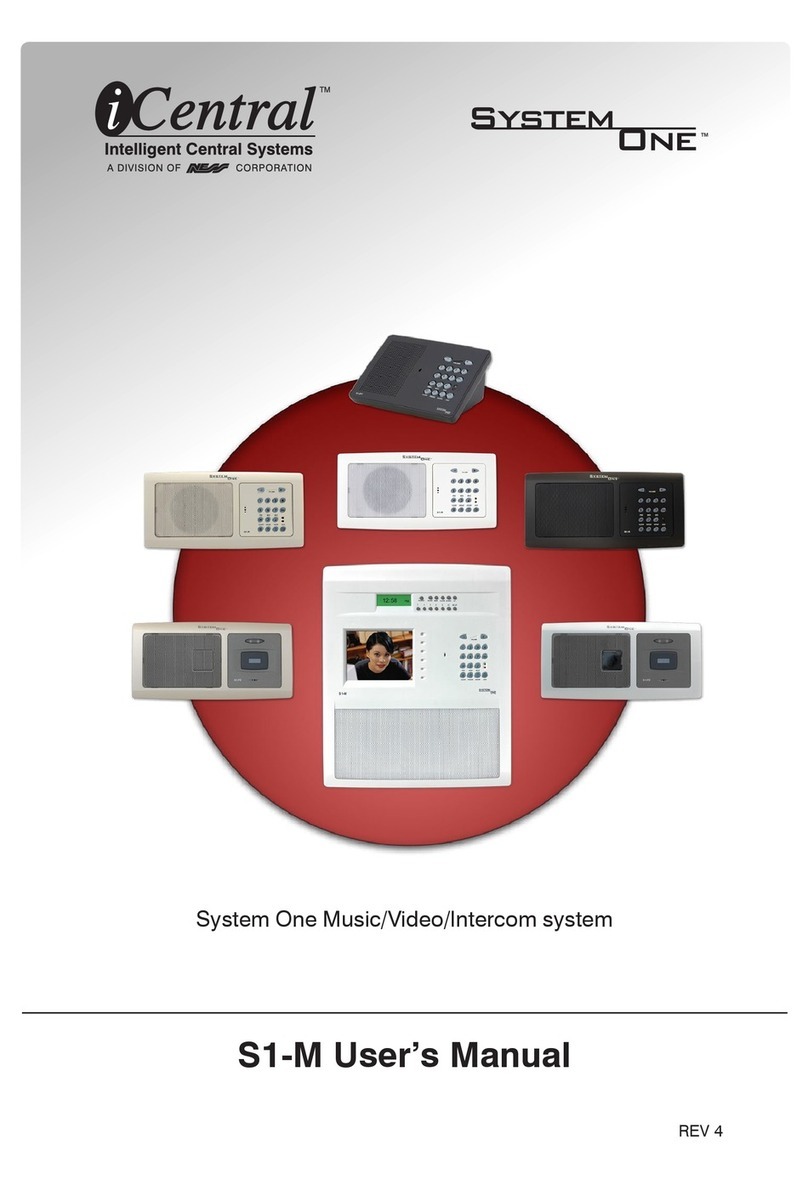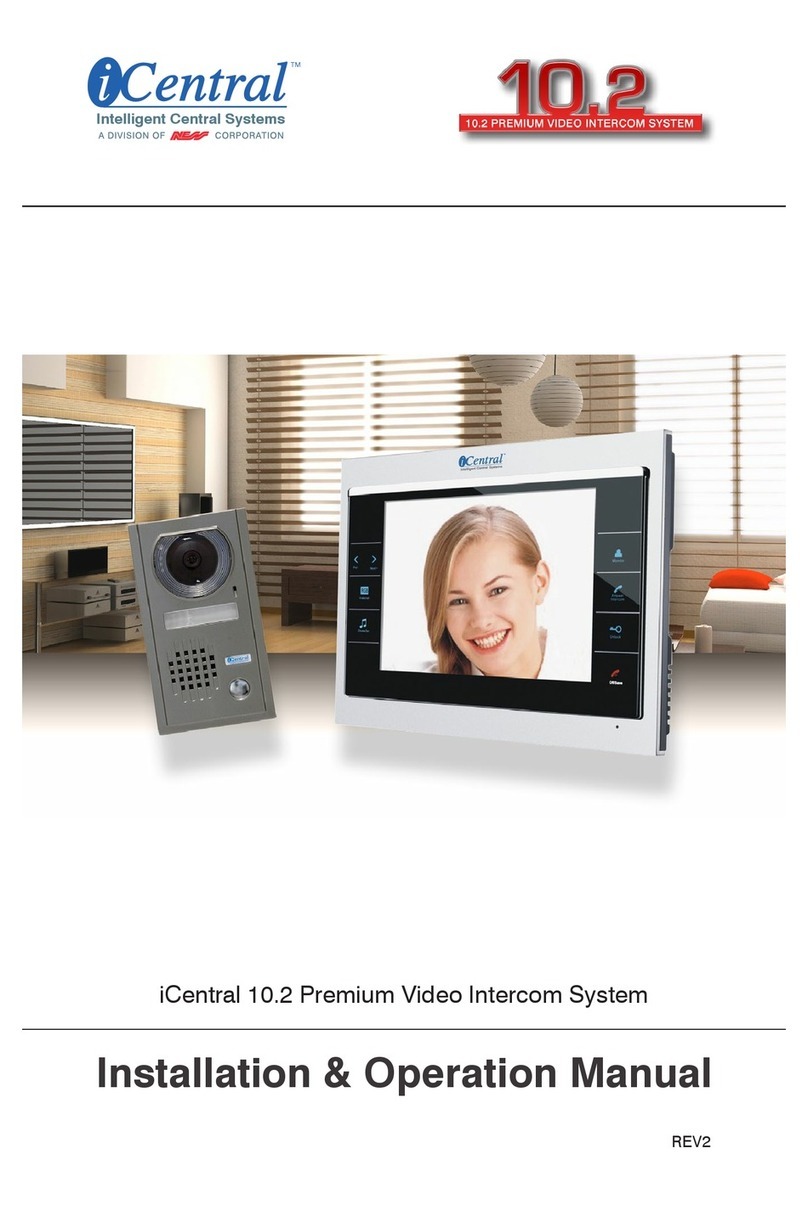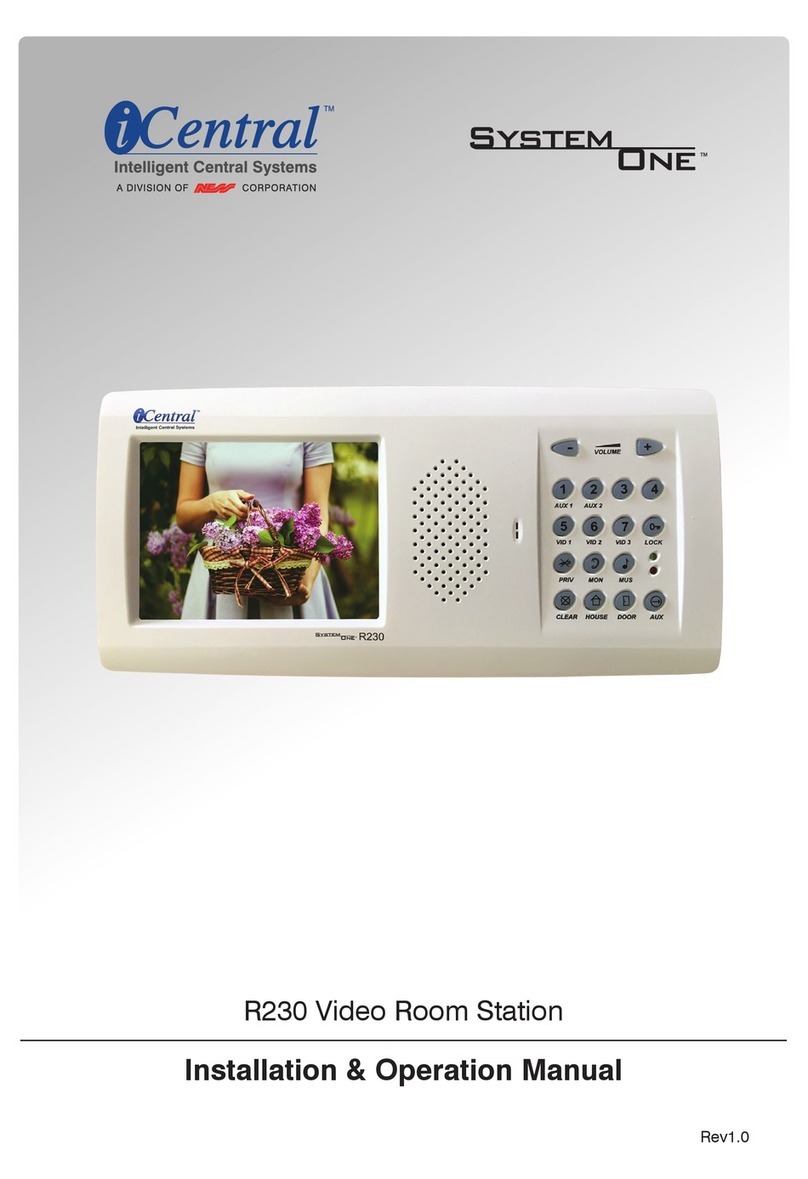SYSTEM ONE
INSTALLATION MANUAL
REV 4.0
M200/M250 MASTERS, R200 (S1R) ROOM STATIONS,
K200 (S1DT) DESKTOP STATIONS, D200 (S1FD) & ALLOY DOOR STATIONS
MASTER STATION ........................................................................................................... 2
ROOM STATIONS ............................................................................................................. 2
DOOR/GATE STATION(S) ............................................................................................... 3
POWER SUPPLY................................................................................................................ 3
AM AND FM ANTENNAS ................................................................................................. 3
DAB+ / FM ANTENNA ....................................................................................................... 3
AUXILIARY INPUT JACKS ............................................................................................. 4
AUXILIARY/LOCK OUTPUT BOARD........................................................................... 4
WHERE TO RUN CABLES............................................................................................... 5
CABLE TYPE AND CONFIGURATION......................................................................... 5
MAXIMUM LENGTH FOR CABLE RUNS .................................................................... 6
CABLE COLOUR CODING.............................................................................................. 6
MASTER TO ROOMS........................................................................................................ 7
MASTER TO DOORS......................................................................................................... 7
POWER SUPPLY................................................................................................................ 7
AM AERIAL ........................................................................................................................ 8
FM ANTENNA..................................................................................................................... 8
DAB+ / FM ANTENNA ....................................................................................................... 8
AUXILIARY INPUT JACKS (OPTIONAL) .................................................................... 9
AUXILIARY OUTPUT BOARDS (OPTIONAL)............................................................. 9
BLOCK DIAGRAMS........................................................................................................ 10
INSTALLATION OF M200 & M250 MASTER STATIONS........................................ 12
INSTALLATION OF R200 (S1R) ROOM STATION.................................................. 16
INSTALLATION OF K200 (S1DT) DESKTOP STATION......................................... 17
INSTALLATION OF D200 (S1FD) DOOR STATION ................................................ 18
INSTALLATION OF ALLOY DOOR STATION.......................................................... 19
INSTALLATION OF AUXILIARY INPUT JACKS ..................................................... 23
INSTALLATION OF AUXILIARY OUTPUT BOARD................................................ 25
INSTALLATION OF POWER SUPPLY ........................................................................ 26






